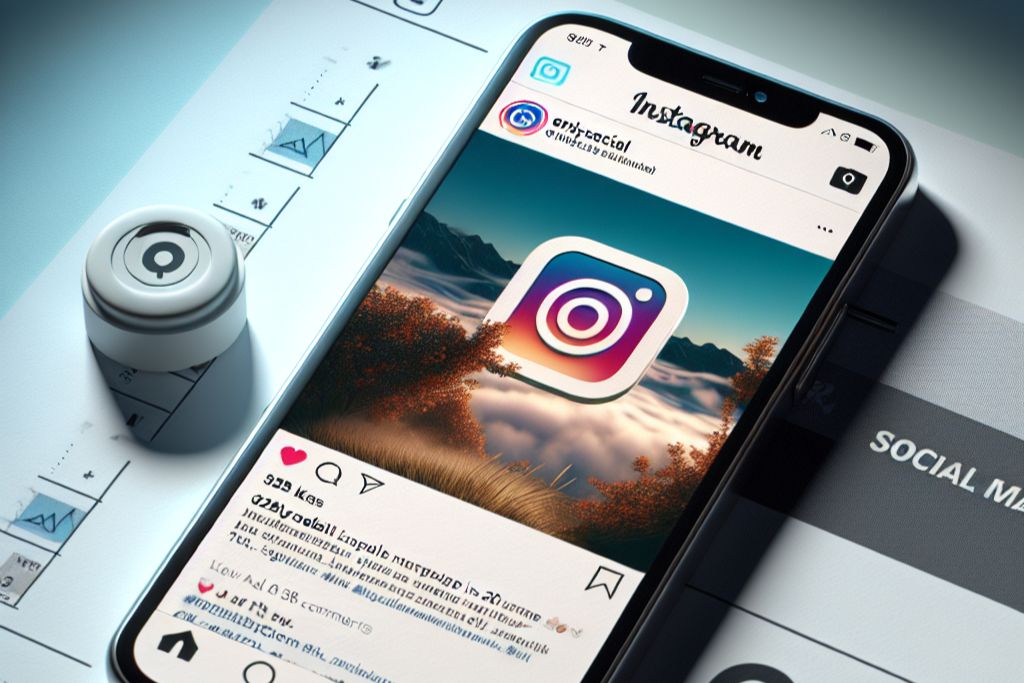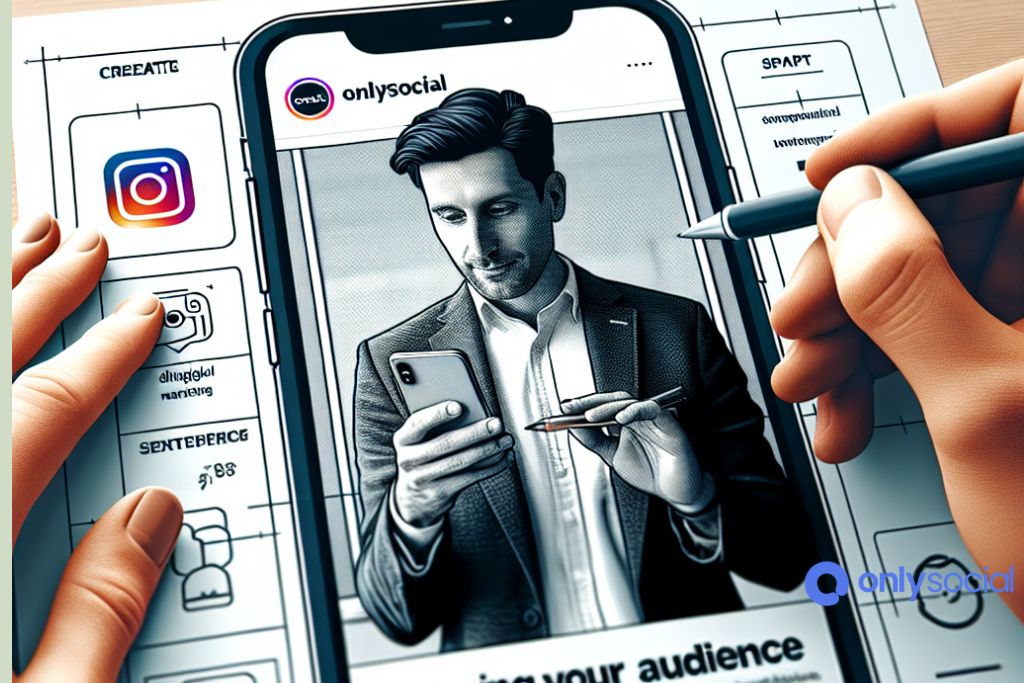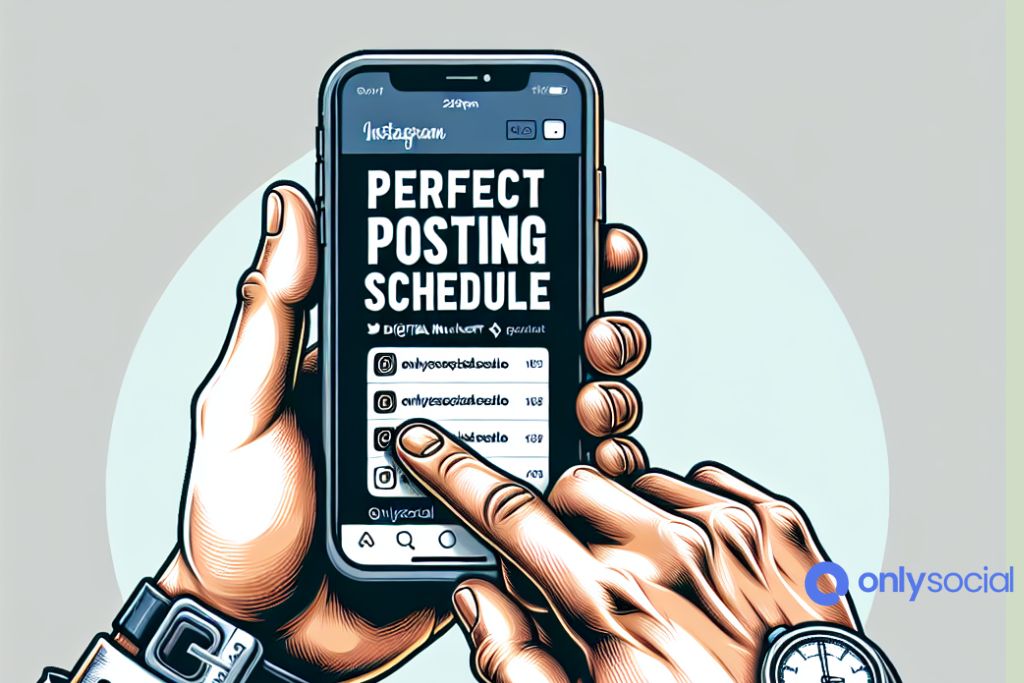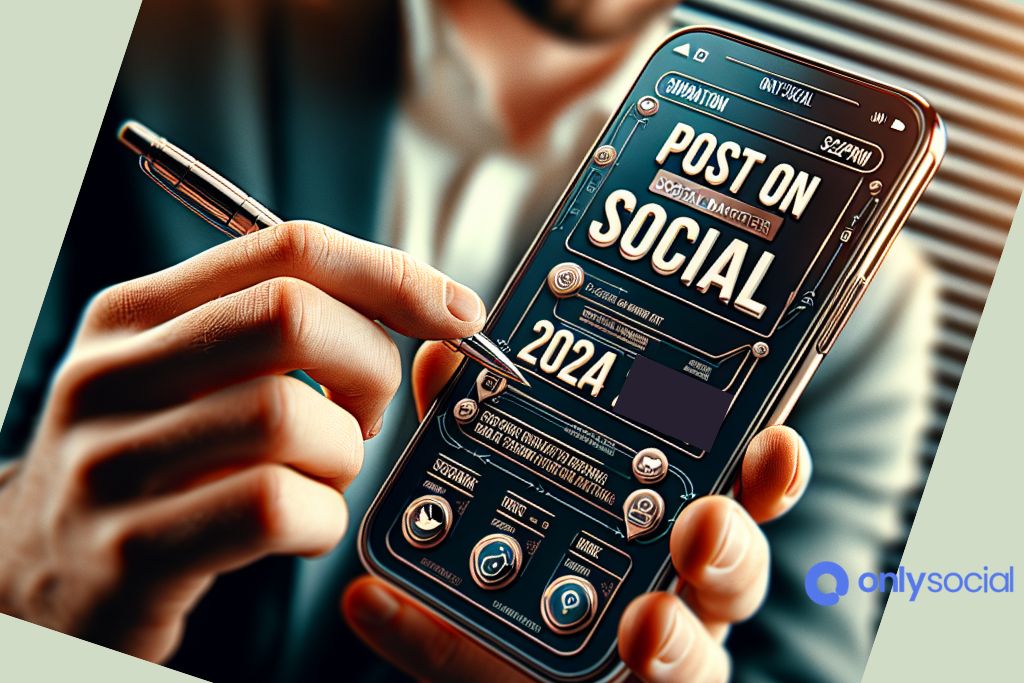Navigating the vibrant and ever-evolving landscape of social media requires more than just creativity and engaging content; it demands a strategic approach to when and how often you share your stories with the world. As we venture into 2024, the task of creating a robust presence on social platforms becomes increasingly complex, making it imperative for brands, influencers, and individuals alike to master the art of timing.
The keyword “Post on Social Media 2024” is not just a term—it’s a pivotal strategy that encapsulates the essence of digital success in the coming year. This introduction to posting on social media in 2024 is designed to unveil the secrets of optimizing your social media strategy for maximum visibility, engagement, and growth.
In a digital age where every scroll, like, and share counts, understanding the nuances of posting frequency can set you apart from the competition. As algorithms evolve and user preferences shift, staying ahead requires a keen understanding of the best times to engage your audience. Whether you aim to captivate, educate, or inspire, this guide is your compass in the vast ocean of social media, steering you toward a strategy that not only resonates with your audience but also amplifies your message across the digital sphere. Let’s dive deep into the dynamics of “Post on Social Media 2024,” unlocking strategies that promise to elevate your social media journey to new heights of success.
Table of Contents
- 1 The Evolving Social Media Landscape in 2024
- 2 Knowing Your Audience: A 2024 Perspective
- 3 Decoding the Perfect Posting Schedule for Each Platform
- 4 Content Quality vs. Quantity: Striking the Right Balance in 2024
- 5 Utilizing Analytics to Inform Your Posting Strategy
- 6 Adapting to New Trends: AI, AR, and More
- 7 Learning from the Best: Case Studies of 2024’s Social Media Triumphs
- 7.0.1 The Rise of Real-Time Engagement: Brand A’s Twitter Strategy
- 7.0.2 Personalization at Scale: Brand B’s AI-Driven Campaign on Instagram
- 7.0.3 Harnessing the Power of AR: Brand C’s Augmented Reality Filters
- 7.0.4 The Virality of Authenticity: Brand D’s User-Generated Content Initiative
- 7.0.5 Sustainability and Social Responsibility: Brand E’s Eco-conscious Campaign
- 8 Crafting Your Ultimate Posting Schedule for 2024
- 9 BONUS
- 10 Frequently Asked Questions
- 10.0.1 How often should I post on social media in 2024?
- 10.0.2 What are the best times to post on social media in 2024?
- 10.0.3 How can I determine the best posting schedule for my audience?
- 10.0.4 Should my content strategy differ across platforms?
- 10.0.5 How important is it to use automation tools for posting on social media?
- 10.0.6 Can posting times affect my engagement rates in 2024?
- 10.0.7 What role does AI play in social media strategies in 2024?
- 10.0.8 How can I stay ahead of changing trends and algorithms in social media?
- 10.0.9 Is user-generated content (UGC) still relevant in 2024?
- 10.0.10 How do I measure the success of my social media posting strategy?
The Evolving Social Media Landscape in 2024

As we delve into the intricacies of how to effectively post on social media in 2024, it’s crucial to first understand the dynamic terrain of the digital world this year. The social media landscape is in a constant state of flux, with new platforms emerging, algorithms changing, and user behaviors adapting at an unprecedented pace. The focus keyword, “Post on Social Media 2024,” captures the essence of navigating these shifts to optimize your social media strategy for enhanced engagement and growth.
Emerging Platforms and Features
2024 has witnessed the rise of new social media platforms and innovative features on existing ones, tailored to cater to niche interests and underserved demographics. These advancements offer fresh avenues for connecting with audiences in more meaningful and interactive ways. For marketers and content creators, this means there are more opportunities than ever to craft targeted content that resonates on a personal level with their audience.
Algorithm Changes
Algorithms continue to be the gatekeepers of content visibility on social media. This year, we’ve seen a notable shift towards AI-driven content curation, focusing more on personalization and user engagement metrics. Understanding these algorithmic preferences is key to determining when and what to post. Content that fosters genuine interaction and keeps users engaged is prioritized, necessitating a strategic approach to posting times to maximize visibility.
User Behavior Trends
The way people consume content on social media in 2024 has seen significant changes. There’s a growing preference for authentic, value-driven content over purely promotional material. Additionally, the consumption of short-form videos has skyrocketed, with platforms like TikTok and Instagram Reels leading the charge. These trends affect not only the type of content you should create but also when to post it to catch your audience when they are most receptive.
Platform-Specific Considerations
Each social media platform has its unique ecosystem and user expectations, making a one-size-fits-all posting strategy ineffective. For instance, the optimal posting frequency on Twitter, where the content moves quickly, differs greatly from Instagram, where quality often trumps quantity. Adapting your posting schedule to each platform’s characteristics and audience habits is essential for 2024.
The Role of Data Analytics
In the quest to master “Post on Social Media 2024,” data analytics plays a pivotal role. By leveraging insights from analytics tools, content creators can fine-tune their posting schedules based on real-time feedback regarding what works and what doesn’t. This data-driven approach enables a more tailored strategy that aligns with the evolving preferences of the social media audience.
Understanding the evolving social media landscape in 2024 is foundational to crafting a posting strategy that not only reaches but resonates with your audience. As platforms evolve and new trends emerge, staying informed and adaptable will be crucial for anyone looking to make an impact on social media this year.
Knowing Your Audience: A 2024 Perspective

In the ongoing quest to effectively post on social media in 2024, one foundational principle remains unchanged: the importance of deeply understanding your audience. The phrase “Post on Social Media 2024” isn’t just about the mechanics of uploading content; it’s deeply embedded in the art and science of capturing the attention and hearts of your audience in a landscape that’s more crowded and diverse than ever before.
Demographic Shifts and Interests
The demographic landscape of social media users continues to evolve, with platforms witnessing shifts in age, location, interests, and behavior. In 2024, these shifts are more pronounced, driven by global connectivity and the rise of niche platforms catering to specific interests. Tailoring your content and posting strategy to match the demographic makeup of your audience on each platform is crucial. This might mean adopting newer platforms that have gained popularity among younger audiences or tweaking your messaging to resonate with the cultural nuances of a geographically diverse follower base.
Behavioral Insights Through Advanced Analytics
Technological advancements have greatly enhanced the capability to gather and analyze audience data. In 2024, leveraging these insights to understand your audience’s behavior on social media is essential. Analyzing peak activity times, engagement patterns, and content preferences helps in creating a posting schedule that aligns with when and how your audience wants to receive your content. This level of insight ensures that your efforts to post on social media are as effective and impactful as possible.
Engaging and Listening to Your Community
Knowing your audience in 2024 goes beyond numbers and analytics; it’s equally about building a community and engaging in meaningful conversations. Social listening tools and direct interactions through comments, polls, and live sessions can provide invaluable qualitative insights into your audience’s evolving needs and preferences. This direct feedback loop can inform your content strategy, helping you to adapt and innovate in line with what your audience values most.
Personalization and Segmentation
As the fight for attention on social media becomes fiercer, personalization has emerged as a key differentiator. In 2024, posting content that speaks directly to the specific interests and needs of various audience segments can significantly boost engagement and loyalty. Utilizing segmentation techniques and crafting messages that resonate with different groups within your audience ensures that your posts are relevant and compelling.
Anticipating Future Trends
The rapid pace of change in social media means that knowing your audience is not just about understanding their current state but also anticipating future trends and preferences. Keeping an eye on emerging patterns, leveraging predictive analytics, and being ready to pivot your strategy will keep you ahead in the game. As you continue to post on social media in 2024, staying agile and informed about potential shifts in audience behavior or platform dynamics will be key to maintaining relevance and engagement.
In summary, deeply knowing your audience in 2024 requires a blend of data-driven insight, direct engagement, and a forward-looking approach. By understanding and anticipating the needs, preferences, and behaviors of your audience, you can tailor your “Post on Social Media 2024” strategy to meet them where they are, with content that captivates and connects.
Decoding the Perfect Posting Schedule for Each Platform

Navigating the “Post on Social Media 2024” landscape requires a keen understanding of the rhythm of each social media platform. The ideal posting schedule varies significantly across platforms, depending on their unique algorithms and the behavior of their user bases. Here’s an expanded look into crafting the perfect posting schedules for higher engagement in 2024.
Instagram thrives on visual content and stories, with its algorithm favoring posts that receive immediate engagement after posting.
| Day of the Week | Optimal Posting Times | Additional Tips |
| Monday | 11 AM – 1 PM | Focus on motivational content to start the week strong. |
| Tuesday | 10 AM – 12 PM | Utilize stories for ongoing engagement. |
| Wednesday | 11 AM – 1 PM | Mid-week content can include polls or interactive posts. |
| Thursday | 10 AM – 12 PM, 7 PM – 9 PM | Throwback Thursday posts or user-generated content. |
| Friday | 9 AM – 11 AM | Light-hearted content to welcome the weekend. |
| Saturday | 9 AM – 11 AM | Engage users with weekend vibes through visuals. |
| Sunday | 7 PM – 9 PM | Prepare your audience for the week ahead. |
Facebook’s vast user base means content can reach a wide demographic, from young adults to older generations, making timing crucial.
| Day of the Week | Optimal Posting Times | Additional Tips |
| Monday | 9 AM – 12 PM | Start the week with engaging content that stimulates conversation. |
| Tuesday | 8 AM – 10 AM | Share educational content or tips. |
| Wednesday | 8 AM – 11 AM | Mid-week highlights or behind-the-scenes content. |
| Thursday | 8 AM – 10 AM | Throwback content or nostalgia-driven posts can perform well. |
| Friday | 8 AM – 10 AM | Friday fun posts, weekend plans, or events promotion. |
| Saturday | 10 AM – 12 PM | Light content; videos and engaging posts for weekend leisure. |
| Sunday | 10 AM – 12 PM | Reflective posts or previews of the coming week’s activities. |
Twitter’s fast-moving feed demands frequent and timely postings to catch users’ attention, with an emphasis on currency and engagement.
| Day of the Week | Optimal Posting Times | Additional Tips |
| Monday | 8 AM – 10 AM, 6 PM – 7 PM | Content that catches up on weekend events. |
| Tuesday | 8 AM – 10 AM, 6 PM – 7 PM | Engage with trending topics and hashtags. |
| Wednesday | 8 AM – 10 AM, 6 PM – 7 PM | Share mid-week insights, ask questions to increase engagement. |
| Thursday | 8 AM – 10 AM, 6 PM – 7 PM | Throwback posts or industry news updates. |
| Friday | 8 AM – 10 AM | Light and engaging content to head into the weekend. |
| Saturday | 9 AM – 11 AM | Casual tweets, personal insights, or fun polls. |
| Sunday | 9 AM – 11 AM | Content preparing for the week, motivational quotes. |
The professional nature of LinkedIn makes it ideal for posting during work hours, focusing on industry news, professional development, and company updates.
| Day of the Week | Optimal Posting Times | Additional Tips |
| Monday | 7 AM – 8:30 AM, 12 PM – 2 PM | Professional updates, and industry news to start the workweek. |
| Tuesday | 7 AM – 8:30 AM, 12 PM – 2 PM | Articles and professional insights perform well. |
| Wednesday | 7 AM – 8:30 AM, 12 PM – 2 PM | Mid-week professional tips or webinars. |
| Thursday | 7 AM – 8:30 AM, 12 PM – 2 PM | Throwback to professional achievements or historical industry analysis. |
| Friday | 7 AM – 8:30 AM | Lighter professional content, weekend reads, or company culture posts. |
| Saturday | Not Recommended | |
| Sunday | Not Recommended |
TikTok
TikTok’s audience is primed for entertaining, creative content, with evenings and weekends being prime times for engagement.
| Day of the Week | Optimal Posting Times | Additional Tips |
| Monday | 7 PM – 10 PM | Start the week with high-energy content. |
| Tuesday | 7 PM – 10 PM | Educational or “how-to” content in your niche. |
| Wednesday | 7 PM – 10 PM | Engage with weekly challenges or trends. |
| Thursday | 7 PM – 10 PM | Throwback content or collaboration with other creators. |
| Friday | 7 PM – 11 PM | Content that kicks off the weekend vibes. |
| Saturday | 10 AM – 12 PM, 7 PM – 11 PM | Diverse content that ranges from morning routines to night-out preparations. |
| Sunday | 10 AM – 12 PM, 7 PM – 11 PM | Wind down content for the weekend or motivational for the upcoming week. |
Decoding the perfect posting schedule for each platform in your “Post on Social Media 2024” strategy requires continuous experimentation and adaptation. Utilize the above times as a starting point, but always be prepared to adjust based on the unique preferences of your audience and the evolving nature of each platform. Regular analysis of your engagement metrics will be crucial
Content Quality vs. Quantity: Striking the Right Balance in 2024
The digital conversation around “Post on Social Media 2024” is not complete without addressing one of the most critical dilemmas faced by content creators and marketers alike: the balance between content quality and quantity. In the rapidly evolving world of social media, where both factors play a significant role in a successful digital strategy, finding the sweet spot between the two is more crucial than ever.
The Primacy of Quality
Quality, the king in the realm of content, has never been more paramount. Users are inundated with a flood of information every time they scroll through their feeds, making it more difficult for your content to stand out. High-quality, engaging, and valuable content that resonates with your audience can cut through the noise, capturing attention and fostering engagement. This emphasis on quality speaks to the need for well-researched, meticulously crafted posts that add value, offer solutions, or provide unique insights to your audience.
In the context of “Post on Social Media 2024,” quality also means relevance. With social media platforms honing their algorithms to serve users the most relevant content, aligning your posts with your audience’s interests and pain points becomes a non-negotiable priority. Tailoring your content to address specific user queries, trends, or discussions not only boosts your visibility but also establishes your brand as a thought leader in your niche.
The Role of Quantity
While quality forms the cornerstone of a successful social media presence, the quantity of content cannot be overlooked. Regular posting is essential to keep your audience engaged and ensure your brand stays top of mind. However, the definition of “regular” can vary widely between platforms and audiences. This is where a nuanced understanding of your “Post on Social Media 2024” strategy becomes invaluable.
Quantity should not come at the expense of quality but should complement it. A consistent posting schedule helps maintain a visible online presence, keeping your audience informed, entertained, and engaged. In 2024, leveraging content creation tools and strategies like content batching and scheduling can aid in maintaining a steady flow of content without compromising its quality.
Striking the Balance
The key to striking the right balance lies in knowing your audience and platform analytics intimately. User engagement metrics, such as likes, shares, comments, and time spent on content, provide direct feedback on how well your content matches up with your audience’s preferences. Experimenting with different content formats (e.g., long-form articles, quick tips, videos) and monitoring their performance can also offer insights into the optimal mix of quality and quantity for your audience.
Another strategy is repurposing high-quality content across multiple platforms, adjusting the format and presentation to suit each platform’s unique characteristics and audience expectations. This approach maximizes the reach of your high-value content without the need for constant creation of new material.
Incorporating user-generated content is another tactic that can help manage the balance between quality and quantity. Encouraging your audience to share their experiences or ideas not only supplies you with additional content but also boosts engagement and community feeling.
As we navigate “Post on Social Media 2024,” it’s clear that the debate between content quality and quantity is not a binary choice but a dynamic equilibrium. The brands and creators who will thrive are those who can harness the power of high-quality content, deliver it consistently, and adjust their strategies based on continuous learning and audience feedback. This balanced approach will be instrumental in building a loyal following, driving engagement, and achieving sustained success in the social media landscape of 2024.
Utilizing Analytics to Inform Your Posting Strategy
In the ever-evolving digital landscape of 2024, leveraging analytics has become a linchpin for devising effective social media strategies. The ubiquitous call to “Post on Social Media 2024” entails not just crafting and disseminating content but also understanding and responding to the data behind each post. Analytics offer a wealth of insights, guiding content creators and marketers in refining their strategies to optimize reach, engagement, and conversion.
The Power of Real-Time Data
Real-time analytics have revolutionized the way brands approach social media posting. By giving immediate feedback on user engagement, these tools enable marketers to make quick adjustments to content’s timing, format, and messaging. Whether it’s picking up on a sudden spike in engagement that suggests a hot trend or recognizing a drop in usual traffic, real-time data ensures that your social media efforts are always aligned with audience preferences.
Understanding Audience Demographics
One of the first steps in crafting a targeted “Post on Social Media 2024” strategy is understanding who your audience is. Analytics provide deep dives into the demographic makeup of your followers, offering insights into their ages, genders, geographical locations, and even the times they are most active online. This information is invaluable for tailoring content that resonates with your audience and choosing the most effective times for posting.
Engagement Metrics
Engagement metrics such as likes, comments, shares, and overall reach are crucial indicators of how well your content is performing. By analyzing which types of posts garner the most engagement, you can fine-tune your content strategy to emphasize these successful elements. Additionally, tracking how engagement fluctuates in relation to posting times can illuminate the best time slots for maximizing visibility and interaction.
Content Performance
Beyond general engagement, delving into the performance of specific content types can reveal what truly captivates your audience. Whether it’s short-form videos, in-depth articles, user-generated content, or interactive polls, analytics help identify what types of posts should be prioritized. This focus ensures that your “Post on Social Media 2024” strategy is not just about quantity but is deeply aligned with quality and relevance.
Competitive Analysis
Analytics tools also facilitate an understanding of how your content stacks up against competitors. By monitoring competitors’ performance and audience engagement, you can uncover gaps in your own strategy or identify successful tactics worth adopting. This competitive analysis helps in carving out a unique space for your brand in a saturated market.
Conversion Tracking
Ultimately, the goal of most social media strategies extends beyond engagement to drive conversions. Analytics play a pivotal role in tracking how effectively social media activities lead to desired actions, whether that’s website visits, sign-ups, or direct sales. Understanding the conversion path—from initial engagement on a social post to the final action—enables marketers to optimize every touchpoint along the customer journey.
In the dynamic world of “Post on Social Media 2024,” utilizing analytics to inform your strategy is not an option but a necessity. By tapping into the rich insights provided by data, content creators can craft more effective, engaging, and result-oriented social media campaigns. Regularly reviewing and adapting your strategy based on these insights ensures that your social media presence remains both relevant and impactful.
Adapting to New Trends: AI, AR, and More
As we chart our course through “Post on Social Media 2024,” it’s evident that the digital landscape is continuously shaped by groundbreaking technologies. Artificial Intelligence (AI) and Augmented Reality (AR) are at the forefront of this revolution, offering novel ways to engage, enchant, and connect with audiences. Understanding and embracing these technologies are pivotal for anyone looking to retain an edge in the competitive world of social media.
Embracing AI for Personalized Experiences
Artificial Intelligence has transformed content creation and customer interaction on social media, enabling hyper-personalized experiences that drive engagement. AI algorithms analyze vast amounts of data to predict user preferences, tailor content suggestions, and deliver targeted advertising with unprecedented precision. In 2024, leveraging AI to provide personalized content feeds enhances user engagement, keeping followers invested and interested in your posts.
AI-driven chatbots and virtual assistants facilitate real-time, personalized user engagement. These tools can handle inquiries, offer recommendations, and provide support, ensuring a seamless and interactive user experience. By integrating AI into your “Post on Social Media 2024” strategy, you position your brand as responsive and attuned to individual user needs.
Augmenting Reality to Engage Users
Augmented Reality offers immersive experiences that captivate users’ imaginations, enriching the social media milieu with interactive and visually engaging content. AR filters and lenses on platforms like Instagram and Snapchat have become particularly popular, allowing users to interact with brands in a fun and engaging manner.
In 2024, AR is not just for entertainment; it’s a potent tool for storytelling, product demonstrations, and creating memorable brand experiences. Employing AR in your social media strategy can differentiate your brand, creating share-worthy content that enhances visibility and user engagement.
AI and Content Creation
AI’s role in content creation is increasingly significant, assisting in generating written content, videos, and images that resonate with your audience. AI tools can help brainstorm content ideas, generate draft posts, and even suggest optimizations for higher engagement. The use of AI in creating content allows for scaling your content strategy efficiently while maintaining a high level of creativity and personalization.
AR for Product Visualization
For e-commerce and retail brands, AR offers an invaluable tool for product visualization. Users can visualize products in their own space or see how they look wearing a product without ever stepping into a store. This direct interaction not only enhances the user experience but also significantly boosts conversion rates. Integrating AR into your “Post on Social Media 2024” posts could transform the way customers interact with your products, making their online shopping experience interactive and immersive.
AI and Analytics
AI plays a crucial role in analyzing social media performance and consumer behavior. Advanced AI algorithms can sift through data to uncover trends, measure campaign performance, and predict the effectiveness of future content. By integrating AI-driven analytics into your strategy, you gain deeper insights into what content resonates with your audience, enabling data-driven decision-making that continually refines and improves your social media presence.
As we navigate the complexities of “Post on Social Media 2024,” the incorporation of AI and AR into social media strategies represents a significant leap forward in how we create, distribute, and engage with content. For brands and creators alike, staying abreast of these technologies and integrating them into your digital strategy can provide compelling experiences that captivate and engage your audience, setting the stage for unparalleled engagement and growth.
Learning from the Best: Case Studies of 2024’s Social Media Triumphs
In the quest to master the art of “Post on Social Media 2024,” examining real-world success stories provides invaluable insights. This year, several innovative campaigns have set new benchmarks in strategy, creativity, and impact. These case studies not only demonstrate the effective execution of social media best practices but also illuminate how brands can connect with their audience in a profound way, using the latest digital trends to their advantage.
The Rise of Real-Time Engagement: Brand A’s Twitter Strategy
Brand A capitalized on the power of real-time engagement by leveraging Twitter’s dynamic platform. During a major global sporting event, the brand utilized live tweets, real-time updates, and interactive polls to engage their audience. The strategy included collaborating with influencers and athletes to share behind-the-scenes content and instant reactions. This approach resulted in a 50% increase in follower engagement and a significant uptick in brand awareness. Brand A’s success illustrates the potency of immediacy and interaction in a “Post on Social Media 2024” strategy, emphasizing the value of being present and active during key cultural moments.
Personalization at Scale: Brand B’s AI-Driven Campaign on Instagram
Brand B introduced a groundbreaking AI-driven campaign on Instagram, offering personalized content to its followers. By analyzing users’ interaction histories, the brand delivered customized videos, product recommendations, and interactive stories tailored to individual preferences. This personalized approach saw a 40% increase in engagement rates and a 25% rise in conversion rates, showcasing the tremendous potential of AI in crafting individualized user experiences that resonate deeply with an audience.
Harnessing the Power of AR: Brand C’s Augmented Reality Filters
In an ambitious move, Brand C launched a series of AR filters on Snapchat and Instagram, allowing users to virtually try on and interact with their products. This immersive experience was coupled with a user-generated content campaign, encouraging followers to share their AR experiences on their own feeds. The campaign generated over a million shares, significantly boosting brand visibility and engagement. Brand C’s innovative use of AR technology underlines the effectiveness of interactive content in engaging users and enhancing the online shopping experience.
The Virality of Authenticity: Brand D’s User-Generated Content Initiative
Amidst a landscape of polished content, Brand D embarked on a campaign championing authenticity. Encouraging their community to post raw, unfiltered stories of their experiences with the brand’s products fostered a sense of trust and relatability. This user-generated content initiative, amplified through reposts and shoutouts, led to a 300% increase in user engagement and a notable improvement in customer sentiment towards the brand. Brand D’s triumph underscores the enduring power of authenticity and community in driving engagement and loyalty.
Sustainability and Social Responsibility: Brand E’s Eco-conscious Campaign
Brand E’s social media campaign centered on sustainability, leveraging platforms like Facebook and Instagram to highlight their commitment to eco-friendly practices. Through a mix of educational content, behind-the-scenes looks at their sustainable processes, and collaborations with environmental influencers, the campaign stirred conversations around sustainability. This initiative not only elevated the brand’s reputation as a responsible entity but also engaged a significant segment of environmentally conscious consumers, demonstrating that aligning brand values with social causes can profoundly resonate with audiences.
These case studies exemplify the dynamic and multifaceted nature of “Post on Social Media 2024,” illustrating how brands that innovate, personalize, engage in real-time, and align with their audience’s values can achieve remarkable success. They serve as powerful lessons for businesses and content creators aiming to navigate the challenges and opportunities of social media in 2024, emphasizing the importance of evolving with the digital landscape to create impactful, resonant connections with audiences worldwide.
Crafting Your Ultimate Posting Schedule for 2024
In the realm of “Post on Social Media 2024,” establishing an optimized posting schedule is a linchpin for maximizing engagement and ensuring your content resonates with your audience. As the digital landscape evolves, so too do the habits of social media users, making it crucial to adapt and refine posting strategies. Here’s a comprehensive guide to crafting your ultimate posting schedule for 2024, tailored to align with current trends, platform algorithms, and audience preferences.
Analyzing Your Audience
Understanding who your audience is and when they’re most active online is the first step in crafting an effective posting schedule. Utilize platform analytics tools to gather data on your audience’s demographics, online habits, and engagement patterns. This insight will enable you to determine the prime times for posting when your content is most likely to be seen and interacted with.
Platform-Specific Best Practices
Each social media platform has its nuances and ideal posting frequencies.
- Instagram: For Instagram, it’s recommended to post 1-2 times per day. The highest engagement rates are seen on Wednesday through Friday, from 10 AM to 8 PM. Stories should be utilized daily to maintain visibility in your followers’ feeds.
- Facebook: Posting once a day on Facebook suffices, with Tuesday, Wednesday, and Friday being the most effective days, particularly between 9 AM and 1 PM. Facebook’s emphasis on community and discussion means fostering engagement through timely and relevant content.
- Twitter: Twitter requires a higher posting frequency due to its fast-paced nature, with 3-5 posts a day being ideal. The window for peak engagement is weekdays, 8 AM to 4 PM, a reflection of its usage for news and live events.
- LinkedIn: Given its professional audience, posting on LinkedIn 2-5 times a week, during work hours from Tuesday to Thursday, maximizes visibility without oversaturating followers.
- TikTok: The vibrant and dynamic audience of TikTok engages most from 7 PM to 11 PM, with Thursday, Friday, and Saturday being peak days. Posting 1-3 times daily caters to the platform’s voracious content appetite.
Evaluating Content-Type and Frequency
Diversifying your content is key to keeping your audience engaged. Mix educational, entertaining, and promotional content to cater to different audience needs and interests. Additionally, consider the nature of each platform when determining content type and frequency. For example, while daily stories may be essential on Instagram, in-depth weekly articles may perform better on LinkedIn.
Leveraging Automation Tools
Use social media management tools to schedule posts in advance, ensuring a consistent presence across platforms without necessitating daily log-ins. These tools often come with analytics features, helping further refine your posting schedule based on performance data.
Flexibility and Adaptation
The digital landscape is ever-changing, necessitating a degree of flexibility in your posting schedule. Stay attuned to shifting trends, platform updates, and changes in your audience’s behavior. Regularly review your analytics to identify what’s working and what isn’t, and be prepared to adjust your strategy accordingly.
Testing and Learning
Finally, adopting a test-and-learn approach will enable you to iteratively improve your posting schedule. Experiment with varying posting times and content formats to discover what achieves the highest engagement. Use A/B testing to make data-driven decisions about your “Post on Social Media 2024” strategy, refining your approach based on empirical evidence.
Crafting your ultimate posting schedule for 2024 is about striking a balance between consistency, engagement, and adaptability. By understanding your audience, tailoring your strategy to each platform, and remaining responsive to data insights, you can maximize your social media impact in the coming year.
BONUS
Maximizing your social media impact in 2024 demands not just knowing what to post, but when to post it. The digital landscape is evolving, and staying ahead requires tools that not only keep pace but empower you to lead. This is where OnlySocial steps in. Our Post Planning and Scheduling feature is designed for modern marketers who demand precision and flexibility. With OnlySocial, you gain the ability to plan and schedule unlimited posts across all your social networks, managing an unlimited number of profiles seamlessly.
This capability ensures that your social media strategy runs like clockwork, optimizing every post for maximum reach and engagement. Say goodbye to the constraints of limited posting slots and the hassle of juggling multiple platforms. Make the smart choice for your 2024 social media strategy. Unlock the full potential of your brand with a commitment-free 7-day trial today.
Frequently Asked Questions
How often should I post on social media in 2024?
The ideal posting frequency varies by platform:
- Instagram: 1-2 times per day.
- Facebook: Once daily.
- Twitter: 3-5 times per day.
- LinkedIn: 2-5 times per week.
- TikTok: 1-3 times daily. It’s crucial to balance consistency with quality; overwhelming your audience can be counterproductive.
What are the best times to post on social media in 2024?
Optimal times for posting depend on your specific audience. However, general guidelines suggest:
- Instagram and TikTok: Evening hours, around 7 PM to 11 PM, show high engagement.
- Facebook: Mid-morning to early afternoon, especially between 9 AM and 1 PM.
- Twitter: Weekdays during work hours, 8 AM to 4 PM, cater to its professional and timely content.
- LinkedIn: Posting during work hours, particularly mid-week, aligns with its professional audience.
How can I determine the best posting schedule for my audience?
Leverage analytics tools available on social media platforms to study your audience’s online behavior and engagement patterns. Experiment with posting at different times and tracking engagement rates to fine-tune your schedule.
Should my content strategy differ across platforms?
Absolutely. Each platform caters to different formats and audiences:
- Visual content thrives on Instagram and TikTok.
- Educational and thought leadership content suits LinkedIn.
- Timely and conversational posts are best for Twitter.
- Community-focused and shareable content works well on Facebook. Adapt your content to suit the strengths and audience preferences of each platform.
How important is it to use automation tools for posting on social media?
Automation tools are highly beneficial for maintaining consistency, enabling advanced planning, and ensuring you post at the optimal times for engagement. They also provide valuable analytics for refining your posting strategy.
Can posting times affect my engagement rates in 2024?
Yes, posting when your audience is most active increases the visibility of your content, which can significantly impact engagement rates. Utilize platform analytics to identify these peak times.
What role does AI play in social media strategies in 2024?
AI assists in personalizing content, analyzing trends, and improving customer service through chatbots. It can provide insights into content performance and help automate routine tasks, making it a crucial component of social media strategies.
How can I stay ahead of changing trends and algorithms in social media?
Regularly review industry news, follow thought leaders in social media marketing, and monitor the performance of your own posts. Engage with your community to gain direct feedback and be prepared to adapt your strategy to changes in the digital landscape.
Is user-generated content (UGC) still relevant in 2024?
UGC remains highly relevant as it promotes authenticity, enhances engagement, and fosters community. Encourage your audience to share their experiences and integrate UGC into your content mix.
How do I measure the success of my social media posting strategy?
Measure success through engagement rates, follower growth, website traffic from social media, conversion rates, and the achievement of specific campaign goals. Use social media analytics tools to track these metrics and adjust your strategy for continuous improvement.




